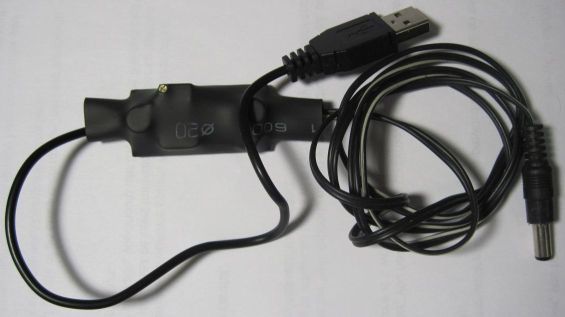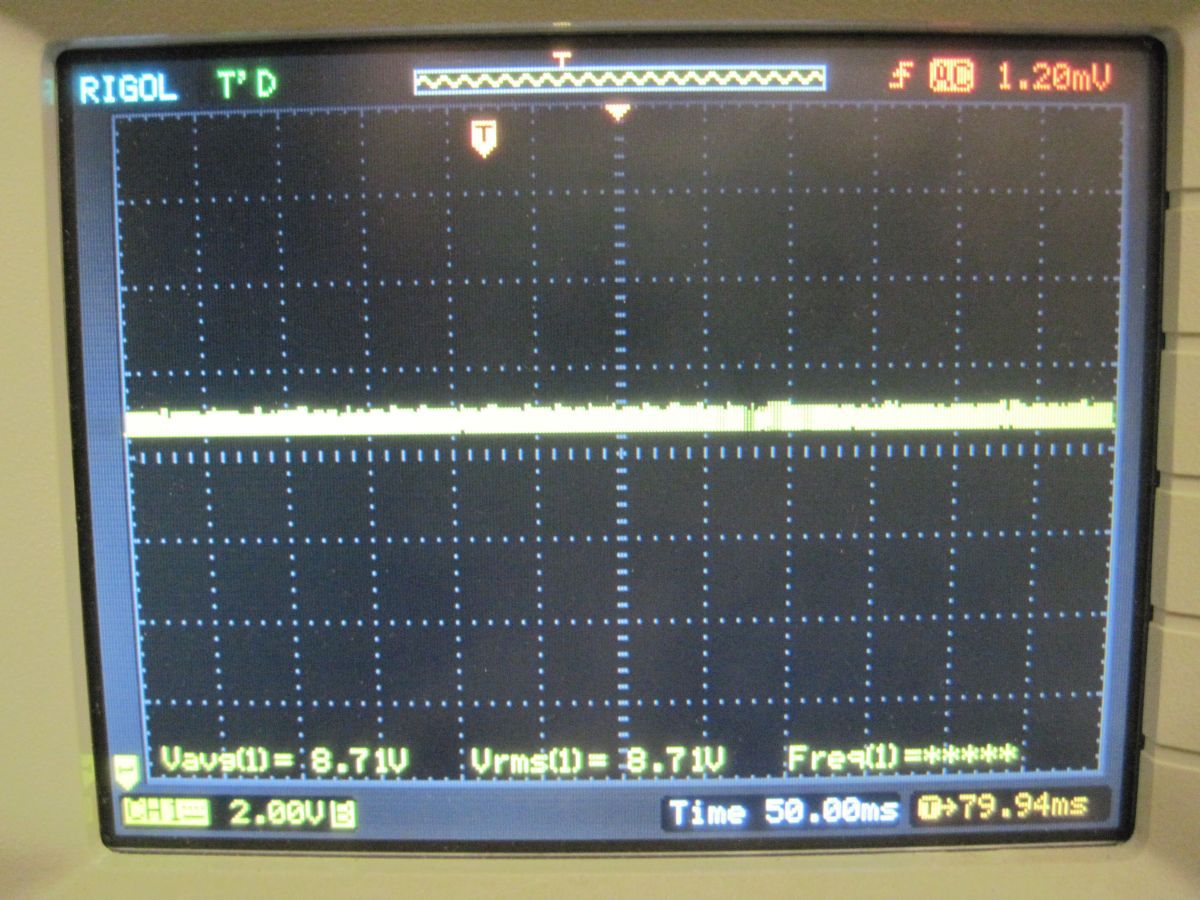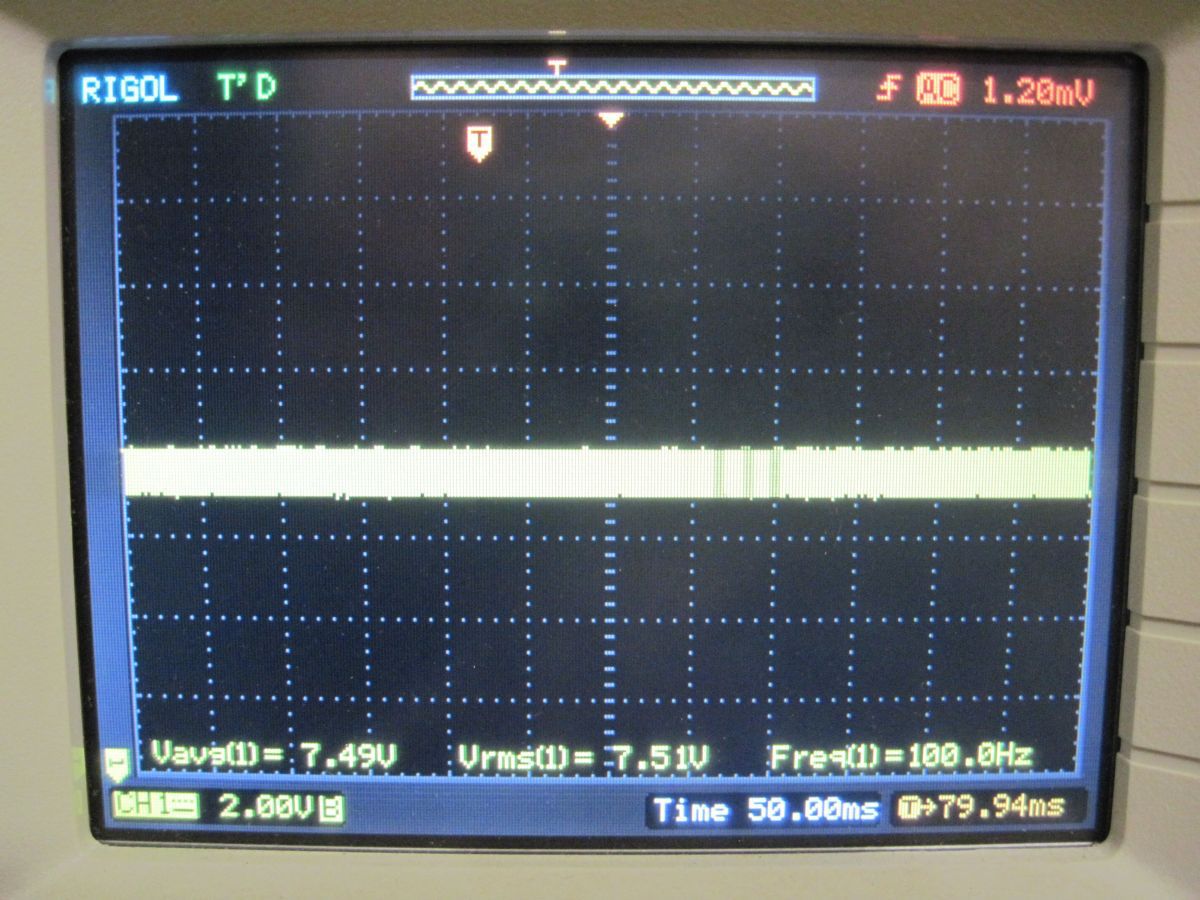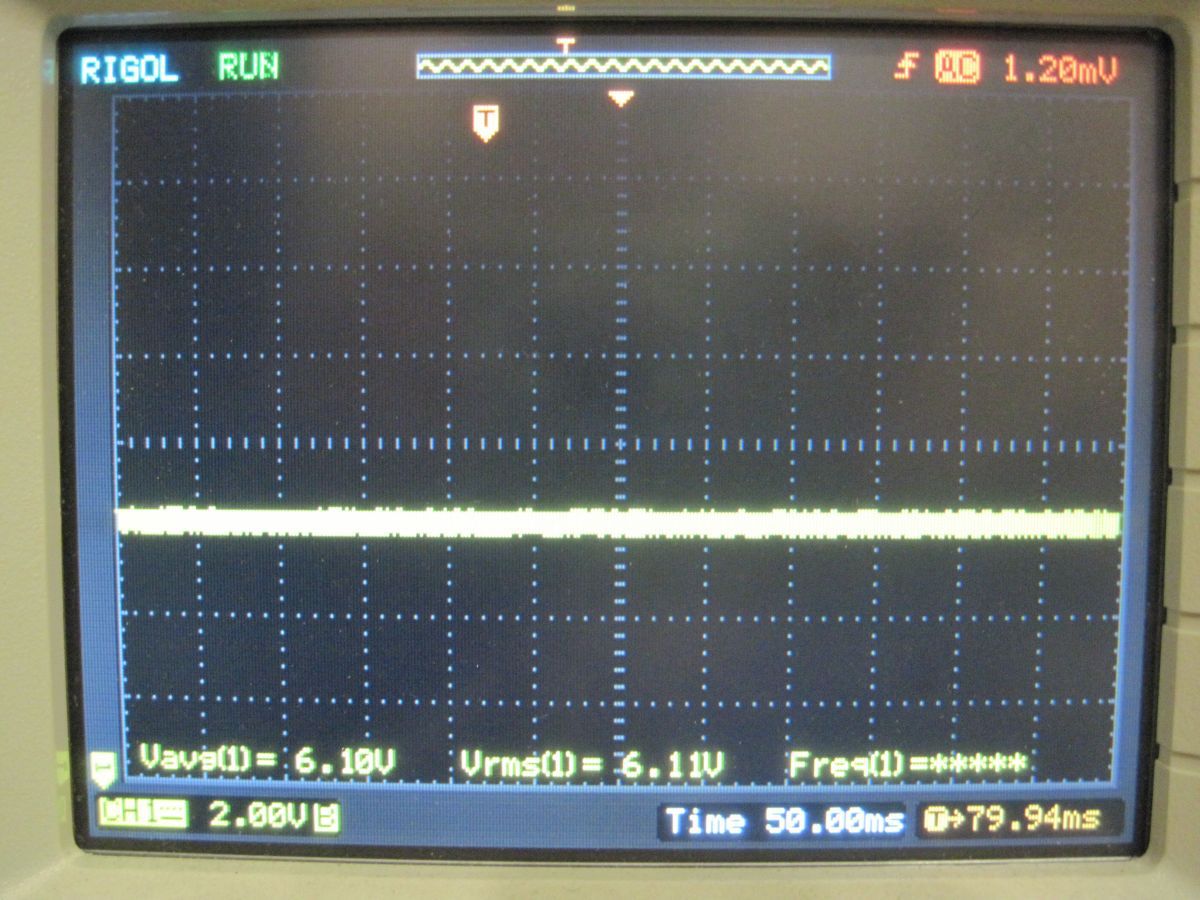Powered by a 9/12-volt SOHO router from a USB source
Self-made adapter-converter for powering common SOHO-routers that require 9/12 V from any 5-volt source of sufficient power with a USB connector.

A few years ago, I had a pair of Sapido RB-1842 USB / WiFi routers. I took one with me on trips so that it was more convenient to distribute hotel / apartment / mobile Internet, and the second I put it permanently in a rural house where the Internet is accessible only by mobile. It soon became clear that both needed autonomous power supply: we sometimes had to put a portable one with us on the balcony in order to relay WiFi from a hotel lounge or a nearby cafe, and in the village regularly turn off the lights for 10-20-40 minutes - laptops and gadgets work, the base station too, but there is no internet.
')
Glad that the five-volt model was, I cut the cables from the power supply units of the routers, putting the "mom / dad" USB connectors in the gap and fed them from conventional power banks when needed. At the same time, one of the nameless poker banks purchased from the Chinese was able, at the presence of input voltage, to simultaneously charge the battery and provide power at the output, and when it failed, switch to the battery. That is, it turned out to be a wonderful five-volt UPS, which was enough for about an hour and a half (in that bank, there are two 18650 batteries) and for which no supervision was required.
And recently I bought a Huawei E3272-153 modem (MegaFon M100-4) in the village, and it turned out that it does not work with these routers - the local script sends old AT commands that the modem firmware does not support. Altering the firmware of the router would take too much time, so I had to buy another - TP-Link TL-MR3220 v2 . On it, by the way, OpenWRT wonderfully rises, including its assembly ROOter .
This model is already 9-volt, like most stationary routers (they say, sometimes they are also equipped with a 12 V power supply). Actually, the board itself is quite enough and five volts (modern processors are all low-voltage), but the power to the USB connector is not fed directly, as in five-volt routers, but through the converter, which drops a little less than a volt. In general, both the router and the modem work somehow from five volts, but the modem periodically loses connection.
Since we didn’t want to lose a convenient and miniature UPS in the form of a poker bank, and the router (the same or similar) was supposed to be taken with us, such modules of step-up DC-DC converters were purchased in China:
The module is made on an XL6009 microcircuit equipped with built-in protection against overload and overheating.
First, I tested it a bit on a purely active load (a piece of nichrome spiral).
Input 12 V, load 12 ohms:
This is the maximum voltage that the converter produces at such a load in the cold state - that is, the output current is about 1.4 A. The noise at the maximum is quite noticeable (when the voltage drops, it quickly decreases). The microcircuit, the diode and the choke quickly warm up to about 70 degrees, the voltage drops, and with it the noise drops a little:
Input 5 V, load 12 ohms:
Here the maximum voltage is about 9.5 V at a current of about 0.8 A. When heated, the voltage drops to 8.7 V.
Input 5 V, load 8 ohms:
There is no longer getting a long voltage above 6 V at a current of 0.75 A.
The results obtained, of course, are not very good, and the declared 4 A is very far away, but the power output is around 5-6 W (9 V at 0.7 A or 12 A at 0.5 A) the transmitter delivers quietly, while heating up moderately.
It remains to solder a wire with a USB-A connector to the input, and any wire with a tubular plug of a suitable thickness to the output. A smooth (with internal contact in the form of a tube, not a plug) plug is quite suitable, since the current through it is less than an ampere. Most PDUs for routers have a sleek plug. The vast majority of routers use standard polarity (plus inside), but it will not be out of place to check just in case.
It makes no sense to particularly strive for the thickness of the wires on both sides - a fall of several tenths of a volt will not make the weather: at the input - because the converter automatically maintains the output voltage, and at the output - because of small currents and a large voltage margin ( seven volts are enough for most routers).
By setting the required output voltage with a trimmer screw (accuracy is enough within a volt), you can connect a router. Since the converter is purely boosting, it will not be possible to remove the voltage below the input voltage from it. But this does not interfere with supplying five-volt routers through it, so the adapter is completely universal.
First of all, I tested the adapter in the village with TP-Link TL-MR3220 v2 and Huawei E3272 modem (true, in 3G / DC-HSPA mode, since 4G / LTE is not there yet) by connecting a USB meter between the device and the adapter. The whole structure consumes only about 0.7 A (the bank gives up to 1.5 A), the converter is slightly warm.
Later, he connected through him a 12-volt city GePON-router Eltex NTE-RG-1402G with a stated power consumption of 10 VA, which is noticeably hot during operation. The converter stretched it too, although it warmed up to 60 degrees, and the router worked perfectly.
TP-Link TL-WR740N was the last to be connected, which of the trio is the weakest - with it the converter consumed only 0.35 A from five volts during loading, and 0.2 - during operation, without heating up at all.
The task was solved successfully and completely - now I can power any of my routers from my own power supply unit or from any USB connector of sufficient power. Including from the bank, putting them on the balcony (and in the absence thereof, hanging them out of the window in the package), which is very useful when you have to live in a hotel and apartment without normal stationary Internet access for some time.
Of course, instead of all this, you could buy routers with built-in batteries, but this would greatly narrow the range of suitable models, especially in terms of compatibility with modems, and make it difficult to replace them with other models. And so we have a fully universal adapter through which almost any router from almost any source with a USB connector can be powered. Although directly from the desktop or laptop - if, of course, allows the load capacity of USB-ports (all my laptops without a problem issued 1-1.5 A).

Prehistory
A few years ago, I had a pair of Sapido RB-1842 USB / WiFi routers. I took one with me on trips so that it was more convenient to distribute hotel / apartment / mobile Internet, and the second I put it permanently in a rural house where the Internet is accessible only by mobile. It soon became clear that both needed autonomous power supply: we sometimes had to put a portable one with us on the balcony in order to relay WiFi from a hotel lounge or a nearby cafe, and in the village regularly turn off the lights for 10-20-40 minutes - laptops and gadgets work, the base station too, but there is no internet.
')
Glad that the five-volt model was, I cut the cables from the power supply units of the routers, putting the "mom / dad" USB connectors in the gap and fed them from conventional power banks when needed. At the same time, one of the nameless poker banks purchased from the Chinese was able, at the presence of input voltage, to simultaneously charge the battery and provide power at the output, and when it failed, switch to the battery. That is, it turned out to be a wonderful five-volt UPS, which was enough for about an hour and a half (in that bank, there are two 18650 batteries) and for which no supervision was required.
The clouds are gathering
And recently I bought a Huawei E3272-153 modem (MegaFon M100-4) in the village, and it turned out that it does not work with these routers - the local script sends old AT commands that the modem firmware does not support. Altering the firmware of the router would take too much time, so I had to buy another - TP-Link TL-MR3220 v2 . On it, by the way, OpenWRT wonderfully rises, including its assembly ROOter .
This model is already 9-volt, like most stationary routers (they say, sometimes they are also equipped with a 12 V power supply). Actually, the board itself is quite enough and five volts (modern processors are all low-voltage), but the power to the USB connector is not fed directly, as in five-volt routers, but through the converter, which drops a little less than a volt. In general, both the router and the modem work somehow from five volts, but the modem periodically loses connection.
Light at the end of the tunnel
Since we didn’t want to lose a convenient and miniature UPS in the form of a poker bank, and the router (the same or similar) was supposed to be taken with us, such modules of step-up DC-DC converters were purchased in China:
View from above

Bottom view. For those who do not know English, the direction of conversion is shown.

The module is made on an XL6009 microcircuit equipped with built-in protection against overload and overheating.
Module Capability Check
First, I tested it a bit on a purely active load (a piece of nichrome spiral).
Input 12 V, load 12 ohms:
Cold

This is the maximum voltage that the converter produces at such a load in the cold state - that is, the output current is about 1.4 A. The noise at the maximum is quite noticeable (when the voltage drops, it quickly decreases). The microcircuit, the diode and the choke quickly warm up to about 70 degrees, the voltage drops, and with it the noise drops a little:
Hot

Input 5 V, load 12 ohms:
Cold

Here the maximum voltage is about 9.5 V at a current of about 0.8 A. When heated, the voltage drops to 8.7 V.
Hot

Input 5 V, load 8 ohms:
Cold

Hot

There is no longer getting a long voltage above 6 V at a current of 0.75 A.
The results obtained, of course, are not very good, and the declared 4 A is very far away, but the power output is around 5-6 W (9 V at 0.7 A or 12 A at 0.5 A) the transmitter delivers quietly, while heating up moderately.
Assembly features
It remains to solder a wire with a USB-A connector to the input, and any wire with a tubular plug of a suitable thickness to the output. A smooth (with internal contact in the form of a tube, not a plug) plug is quite suitable, since the current through it is less than an ampere. Most PDUs for routers have a sleek plug. The vast majority of routers use standard polarity (plus inside), but it will not be out of place to check just in case.
It makes no sense to particularly strive for the thickness of the wires on both sides - a fall of several tenths of a volt will not make the weather: at the input - because the converter automatically maintains the output voltage, and at the output - because of small currents and a large voltage margin ( seven volts are enough for most routers).
By setting the required output voltage with a trimmer screw (accuracy is enough within a volt), you can connect a router. Since the converter is purely boosting, it will not be possible to remove the voltage below the input voltage from it. But this does not interfere with supplying five-volt routers through it, so the adapter is completely universal.
Testing
First of all, I tested the adapter in the village with TP-Link TL-MR3220 v2 and Huawei E3272 modem (true, in 3G / DC-HSPA mode, since 4G / LTE is not there yet) by connecting a USB meter between the device and the adapter. The whole structure consumes only about 0.7 A (the bank gives up to 1.5 A), the converter is slightly warm.
Later, he connected through him a 12-volt city GePON-router Eltex NTE-RG-1402G with a stated power consumption of 10 VA, which is noticeably hot during operation. The converter stretched it too, although it warmed up to 60 degrees, and the router worked perfectly.
TP-Link TL-WR740N was the last to be connected, which of the trio is the weakest - with it the converter consumed only 0.35 A from five volts during loading, and 0.2 - during operation, without heating up at all.
findings
The task was solved successfully and completely - now I can power any of my routers from my own power supply unit or from any USB connector of sufficient power. Including from the bank, putting them on the balcony (and in the absence thereof, hanging them out of the window in the package), which is very useful when you have to live in a hotel and apartment without normal stationary Internet access for some time.
Of course, instead of all this, you could buy routers with built-in batteries, but this would greatly narrow the range of suitable models, especially in terms of compatibility with modems, and make it difficult to replace them with other models. And so we have a fully universal adapter through which almost any router from almost any source with a USB connector can be powered. Although directly from the desktop or laptop - if, of course, allows the load capacity of USB-ports (all my laptops without a problem issued 1-1.5 A).
Source: https://habr.com/ru/post/244669/
All Articles